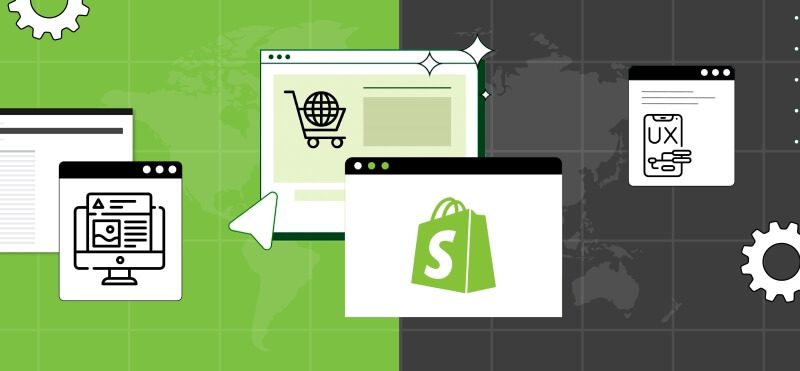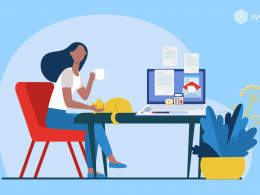As a Shopify store owner, you know that apart from the physical products that you sell, everything else exists on a digital plane, yet it features heavily in the overall health of your business.
Your storefront is the main connection between your brand and your customers.
So how can you make your storefront tells the right story? What elements should it have to adequately convey your brand identity and attract your ideal customers?
In this article, I’ll dive into those questions and explain in more detail what the key elements of successful website design on Shopify are. Let’s get started.
Contents:
1. Is website design a matter of personal preference or a data-driven choice?
2. What are the main complaints of Shopify store owners about their storefronts?
3. What website design elements that are usually dismissed by store owners negatively impact sales?
4. What are the key design elements of a good storefront on Shopify?
5. How can custom storefront optimization influence your business on Shopify?
Is website design a matter of personal preference or a data-driven choice?
Both! Companies are often guided by their brand identity when crafting a new website, but the best brands also make their decisions based on the data.
When building a new Shopify store, you need to understand your customer first. This often requires you to develop buyer personas that detail your target audience’s demographics, where they hang out online, their pain points, and more.
All this will inform how you design your store, from your homepage and FAQs to your product pages and checkout. The imagery, copy, and CTAs must cater to your ideal customer to move the needle.
Navigation is another huge aspect of store design. Creating a frictionless shopping experience from homepage to checkout requires behavioral analytics to show how customers find what they need.
So, while not every brand will use data to inform their design decisions, the best stores are built by combining personal preference with data-driven insights.
What are the main complaints of Shopify store owners about their storefronts?
Shopify merchants will have the same complaints as merchants on any other platform. The complaints are a mix of actual issues on the platform and user error.
The biggest complaints are:
- Slow-loading pages. This issue is primarily due to uncompressed images and too many apps, which merchants can take steps to fix themselves.
- Lack of design customization options. Shopify’s theme editor allows for some customization at the template level but lacks the ability to customize individual pages like a great page builder app can.
- Duplicate content from multiple product pages. Since product tags can, by default, create new product page instances, merchants must add code to make the main product page the canonical page and deindex duplicates.
- Difficulty with importing and managing products. Product information management (PIM) is a part of the Shopify platform, but it isn’t its central function, so getting products onto your store and managing inventory can be difficult.
Luckily, Shopify is one of the most full-featured e-commerce platforms out there and many of the top complaints can be addressed with the right tutorial.
Shogun Page Builder is a drag-and-drop visual editor that makes it easier for brands to quickly create and customize all their Shopify pages to their exact specifications. To help with page speed issues, it includes built-in image optimization.
What website design elements that are usually dismissed by store owners negatively impact sales?
Two huge aspects of website design that many Shopify store owners overlook is mobile optimization and page speed.
People are doing more and more of their shopping on their phones. Mobile commerce accounts for over 70% of global e-commerce sales already, and that’s only increasing.
So, it’s vital to design store pages for mobile commerce so your site is responsive no matter what device shoppers are using. Shopify themes are responsive, but to design for any screen size you need a great page builder.
Shoppers also have a lot going on, so they have no patience for slow sites. Most people are less willing to buy from an online store that loads slowly. It’s just a bad user experience.
Connected with these two web design blunders is bad design. First impressions are everything for DTC brands, so you need to impress early on when they are shopping on your site and keep it consistent throughout.
As you design, keep your images compressed for fast loading and create with your mobile experience in mind. By threading the needle on these three things, your store will perform better and your customers will stick around.
What are the key design elements of a good storefront on Shopify?
A good Shopify storefront looks many different ways, but what you’ll find in all the best stores are a few essential elements.
- Eye-catching product photography. The centerpiece of any great Shopify store must be the product, so don’t skimp on making your products the hero of your site with gorgeously-shot photography.
- A vibrant color palette. Your brand colors are an important part of the shopping experience and how people perceive your brand. Look to color psychology to inform your brand identity.
- Intuitive navigation. Shoppers need to be able to quickly get from your homepage to the right product page without friction, so spend time building out product collections and navigation menus that make this simple.
- Thoughtful use of negative space. Too much design can be a bad thing. Give shoppers’ eyes a break by integrating negative space (AKA white space) throughout your page designs.
- Video marketing. When trying to approximate the brick-and-mortar shopping experience in your online store, images alone can only do so much. Add videos across your store to show the extra dimensions of your products.
- Compelling, on-brand copy. Design without words won’t get you too far. The two should work hand in hand to persuade shoppers to click the buy button. Just as with your brand colors, the voice of your brand should be defined in your guidelines.
How can custom storefront optimization influence your business on Shopify?
Constant optimization of your Shopify store pages is key to boosting conversion rates and sales. Building your store is just the beginning, the foundation, of your store design journey.
The way people shop constantly changes. The benefit of having an e-commerce storefront is that you can update elements quickly to adapt to changes. Leveraging heat map tools and A/B testing, you can better understand the user experience and the elements that make them convert.
By tracking clickthrough rates, bounce rates, time on page, and sales by page, you can make small changes that have big impacts. Beyond that, you can optimize your pages for search engines to drive more organic traffic and conversions.
Lastly, as I mentioned above, optimizing your Shopify store for speed can significantly increase conversions and lower bounce rates.
The job of store optimization never ends, but merchants that stay on top of it will see their revenue increase for the effort.
Key design elements of a Shopify online store: closing thoughts
Your storefront is not only a gateway to the business relationship with your customers but a place where everything happens, all the way from casual browsing your store to becoming a loyal customer.
And it takes place in the comforts of your custom Shopify storefront.
So use this vehicle of storefront optimization to truly capture your brand and its offering as well as create a customer-friendly place that fosters your business growth.







Wow, what an insightful breakdown of the essential components for a successful E-commerce website on Shopify! Your attention to detail in highlighting key elements such as intuitive navigation, compelling visuals, and seamless checkout experiences truly emphasizes the importance of user-centric design. As someone passionate about creating an engaging online storefront, I greatly appreciate the practical tips and expert guidance shared here. Your article serves as a valuable resource for both seasoned entrepreneurs and those just starting their E-commerce journey. Thank you for sharing your expertise!
Hi Jasmin, Thank you for your enthusiastic response! We’re so glad to hear that you found the breakdown helpful and applicable to your e-commerce endeavors. Best of luck with your online storefront!